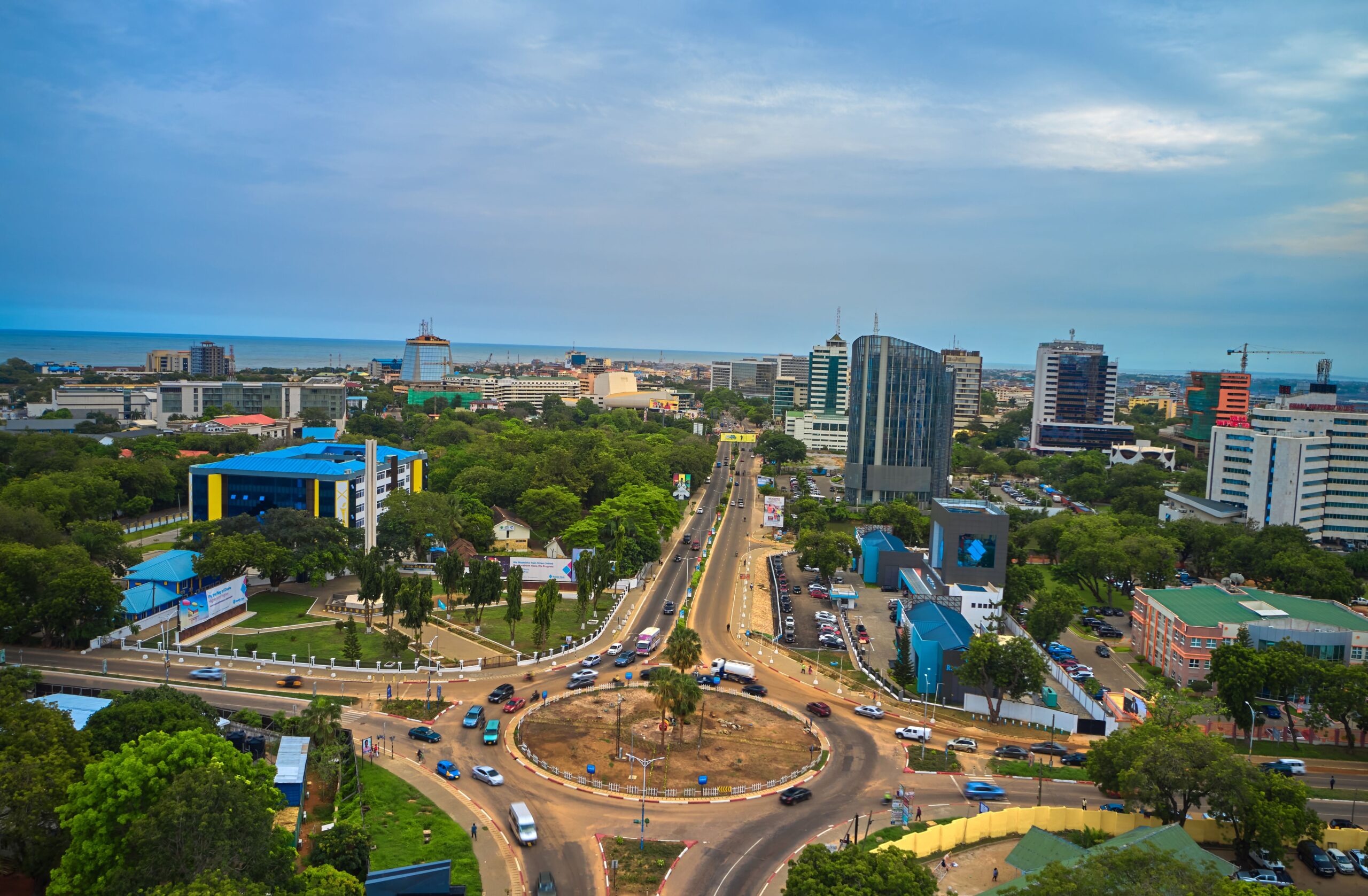USAID Officially Shut Down: What It Means for NGOs in Kenya

Maina Susan is a content researcher at Bubi-Alexander, who simplifies Virtual CFO services for multinationals and NGOs with her finance expertise.
LinkedIn >>Introduction
The USAID shutdown was officially confirmed on 1st July 2025 by U.S. Secretary of State Marco Rubio, marking a historic shift in U.S. foreign aid policy
This expected yet seismic decision reverberated across the global NGO community – especially in Kenya, a major recipient of USAID funding.
Kenya is among 26 countries identified as most vulnerable to U.S. aid cuts, largely due to its low-income status and growing debt levels
This move comes after earlier actions by President Donald Trump’s administration in February 2025, which included an abrupt funding freeze and sweeping layoffs across USAID personnel.
Rubio’s announcement confirmed that USAID will now operate under the State Department, with its autonomy dissolved and most of its projects dismantled.
In this thought piece, we explore the ripple effects on Kenyan NGOs, the lessons in overreliance on donor aid, and the urgent need for localization and funding diversification.
Let’s dive right in!
Why Was USAID Shut Down?
President Trump’s “America First” agenda played a central role in this development.
He argued that U.S. taxpayer dollars should prioritize domestic needs over foreign aid.
USAID, which represented billions of dollars in foreign development assistance, was a prime target for cuts.
In January 2025, Trump placed USAID under a 90-day suspension via the Department of Government Efficiency (DOGE).
This effectively ended decades of global engagement and signaled a fundamental shift in U.S. foreign policy.
A Brief History of USAID
USAID was created in 1961 by President John F. Kennedy to promote economic development, humanitarian aid, and democratic governance.
It was the primary U.S. body delivering aid to developing countries, addressing:
- Public Health (e.g., HIV/AIDS, malaria, TB)
- Food Security and agriculture
- Education, especially for girls
- Emergency Relief (natural disasters, refugee crises)
- Trade and Economic Growth, including digital development
USAID’s Work in Kenya
USAID has been a critical partner to Kenya across many sectors, consistently ranking among the top three foreign aid contributors annually.
Its notable contributions include:
- Funding HIV/AIDS programs through PEPFAR with over 1.3 Million Kenyans relying on free ARV treatment
- Supporting devolution and county governments
- Climate resilience in arid regions
- Access to clean water and sanitation (WASH)
- Civil society and electoral transparency
In early 2025, the 90-day freeze alone:
- Closed over 150 clinics
- Left 35,000+ workers jobless
- Terminated 80 projects, including 23 administrative and 57 development-based programs
- Caused a funding loss of $324 million, including $219.5 million in canceled contracts and grants (Ksh 28.36 billion)
The USAID shutdown threatens to undo decades of investment in these critical areas.
Impact of the USAID Shutdown on NGOs in Kenya
The shutdown has caused massive disruption. Key effects include:
1. Funding Gaps
- Projects in HIV/AIDS treatment, food relief, and education that relied on USAID face immediate halts.
2. Operational Risk
- NGOs without diversified funding sources may shut down or downsize drastically.
3. Loss of Trust
- When NGOs fail to meet obligations due to sudden funding gaps, donor confidence and stakeholder trust suffer.
Key Lesson for Kenyan NGOs: Dependency Is Dangerous
Overreliance on foreign donors is proving unsustainable.
Many Kenyan NGOs built their financial models around consistent Western aid.
But the USAID shutdown reveals how fragile that model is.
This is not just a funding crisis – it’s a Business continuity crisis!
What Could Have Helped Local NGOs?
Localization and Diversification
Even before its shutdown, USAID promoted donor localization – a model where funding is directly allocated to local NGOs instead of large international NGOs.
Benefits of Donor Localization:
1. Empowers local NGOs
- Localization gives decision-making power and financial control directly to grassroots organizations.
- This means local NGOs can design, implement, and adapt projects that are contextually relevant to the communities they serve – without waiting on external directives.
- It boosts ownership, strengthens autonomy, and fosters more sustainable outcomes.
2. Builds capacity and accountability
- With more direct funding comes greater responsibility – and that pushes local organizations to improve their internal systems.
- Localization encourages investment in governance, financial management, and compliance structures.
- Over time, this creates a culture of accountability and transparency that builds donor confidence and long-term credibility.
3. Cuts out intermediaries
- Traditional donor models often route funds through large international NGOs or agencies, leading to bureaucratic delays and reduced efficiency.
- Localization reduces this dependency on intermediaries, ensuring more funds go directly to service delivery rather than administrative overheads.
- It’s not just faster – it’s more cost-effective and community-centered.
4. Encourages Innovation and Agility
- When local actors are trusted with resources, they’re able to pilot new ideas and respond quickly to challenges on the ground.
- This kind of agility often leads to more resilient and adaptive solutions – particularly in fast-changing environments like disaster response or health emergencies.
For Kenyan NGOs, this was a golden opportunity to build independence and financial stewardship. But many didn’t restructure fast enough.
Now, that window is narrower – and the urgency greater.
What Should Kenyan NGOs Do Now?
1. Diversify Income Sources:
- Over-relying on one major donor is a risky game.
- Kenyan NGOs should start exploring alternative funding avenues such as local philanthropy, fee-based consultancy services, government grants, and even social enterprise models that generate their own revenue.
2. Strengthen financial systems:
- Robust internal financial systems are no longer a luxury – they’re a necessity.
- NGOs should invest in improving internal controls, compliance procedures, audit readiness, and transparent reporting.
- These are the very foundations of donor trust and future funding eligibility.
3. Get a Virtual CFO:
- A Virtual CFO (Chief Financial Officer) isn’t just for corporations – it’s a game-changer for nonprofits.
- A virtual CFO provides strategic oversight on budgeting, donor fund management, reserve planning, and risk forecasting – without the cost of a full-time finance executive.
- They help NGOs prepare for transitions, avoid financial shortfalls, and build long-term resilience
4. Invest in capacity building:
- To attract new funders and manage resources effectively, NGOs must build their organizational muscle.
- This includes staff training, governance improvement, tech adoption, and enhancing monitoring & evaluation frameworks.
- Stronger institutions are better placed to survive in an increasingly competitive donor environment.
Final Thoughts
The USAID shutdown is not just a policy shift – it’s a wake-up call.
Kenyan NGOs must prioritize agility, accountability, and autonomy. Only organizations that adapt quickly, diversify funding, and invest in strong governance will thrive in this new landscape.
“It is not the strongest of the species that survives… but the one most responsive to change.” – Charles Darwin
Disclaimer
This article is for informational purposes only and should not be considered financial or legal advice. For tailored advice, please consult a qualified advisor or contact Bubi Alexander & Co.
Need to Reassess Your NGO’s Financial Health?
At Bubi Alexander & Co., we help nonprofits in Kenya:
- Navigate post-donor transitions
- Strengthen financial governance
- Build sustainable financial models
Contact Us Today!!
- https://thehill.com/policy/international/5379363-us-aid-agency-closure/
- USAID officially shuts down and merges remaining operations with State Department : NPR
- Revealed: List of health projects, billions lost in USAID shut down in Kenya
- Sh33bn Kenya contracts, grants axed in USAID purge – Business Daily
- Over 35,000 jobs lost, 150 clinics shut down as USAID freeze hits Kenya
- Localization | IFRC
- USAID.gov
-
 10 Jul 2025Money Laundering Through Cryptocurrency in Kenya
10 Jul 2025Money Laundering Through Cryptocurrency in Kenya -
 27 Jun 2025Israel-Iran War Impact on Multinational Companies in Kenya: Economic Risks and What’s Next
27 Jun 2025Israel-Iran War Impact on Multinational Companies in Kenya: Economic Risks and What’s Next -
 19 Jun 2025Stablecoin Insights for CFOs in 2025
19 Jun 2025Stablecoin Insights for CFOs in 2025 -
 12 Jun 2025When to Hire a Virtual CFO – NGOs and Multinationals in Kenya
12 Jun 2025When to Hire a Virtual CFO – NGOs and Multinationals in Kenya -
 05 Jun 2025Transfer Pricing in Kenya – A Simple Guide for Multinationals
05 Jun 2025Transfer Pricing in Kenya – A Simple Guide for Multinationals -
 30 May 2025What is the Public Benefits Organizations Act, 2013 and How Does It Affect NGOs in Kenya?
30 May 2025What is the Public Benefits Organizations Act, 2013 and How Does It Affect NGOs in Kenya? -
 14 May 2025Accounting For NGOs - A Simple Guide
14 May 2025Accounting For NGOs - A Simple Guide -
 17 Apr 2025Impact Of Trump's 10% Tariff On Kenya's Exports and Economy
17 Apr 2025Impact Of Trump's 10% Tariff On Kenya's Exports and Economy -
 07 Apr 2025Who is a Virtual CFO and Why Does Your Business Need One?
07 Apr 2025Who is a Virtual CFO and Why Does Your Business Need One? -
 19 Mar 2025Carbon Credits in Kenya: What are They and How are They Regulated?
19 Mar 2025Carbon Credits in Kenya: What are They and How are They Regulated? -
 19 Mar 2025Permanent Establishment (PE) in Kenya: Tax & Compliance Guide
19 Mar 2025Permanent Establishment (PE) in Kenya: Tax & Compliance Guide
